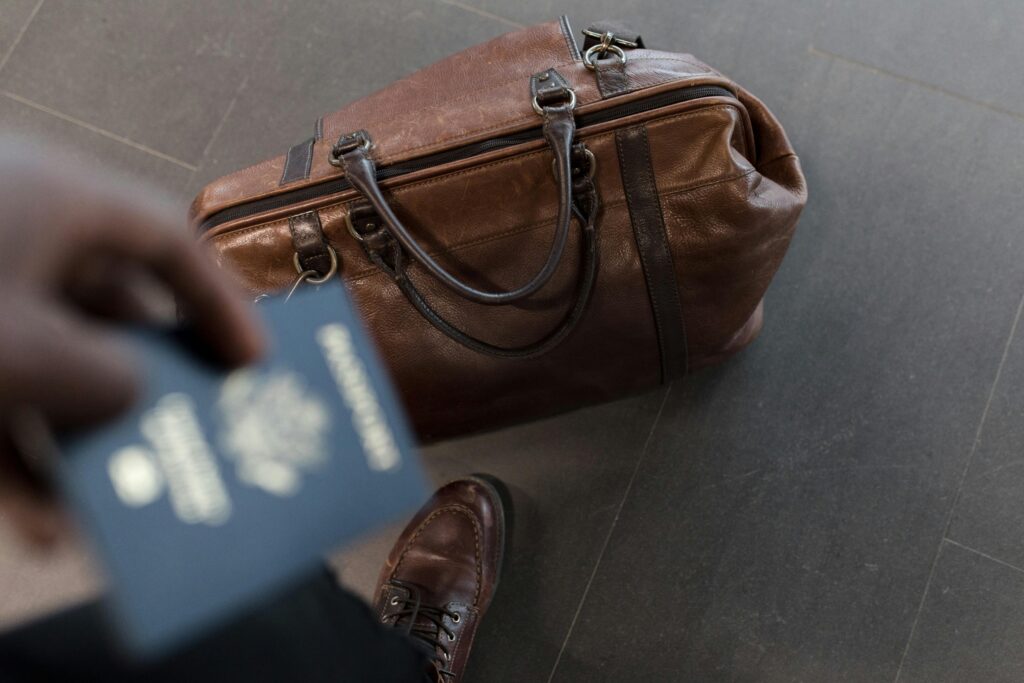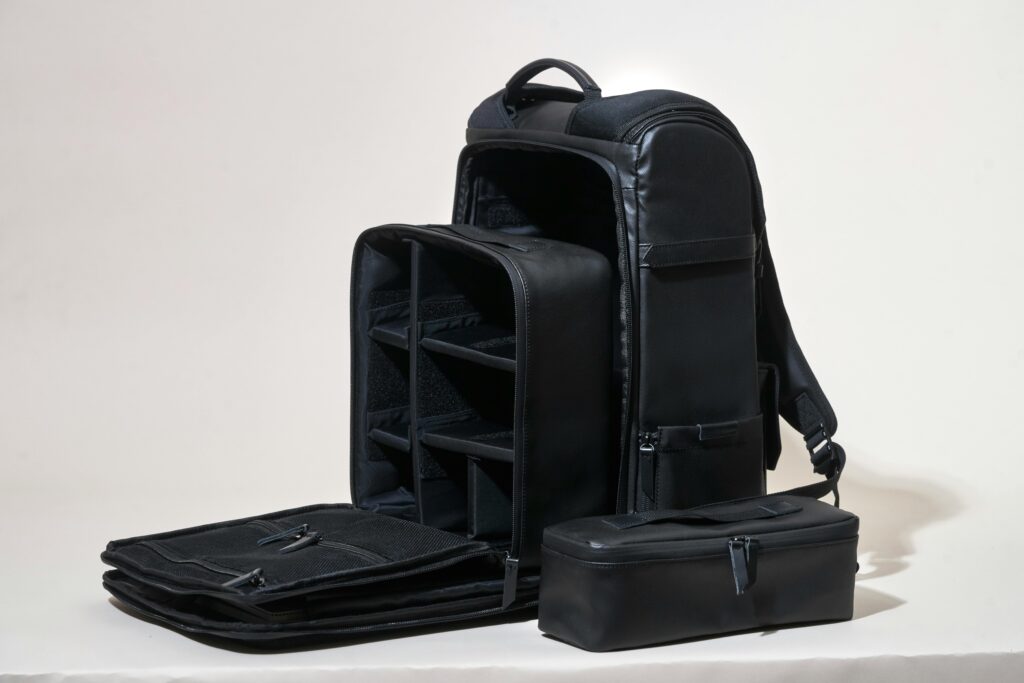Not sure how big your carry-on can be for your next flight? You’re not alone—hand luggage rules vary by airline and can be surprisingly strict. From figuring out the right size and weight limits to avoiding last-minute fees and boarding headaches, there’s a lot to keep track of.
This guide breaks down everything you need to know about carry-on luggage size rules, airline-specific policies, and how to pack smartly so you can breeze through security without surprises. Here’s how to make sure your bag fits—literally and figuratively—into your flight plan.
What are Carry-On Luggage Size Restrictions?

Also known as cabin baggage or hand baggage, carry-on luggage refers to a small piece of luggage that passengers can carry into a flight’s cabin. It’s typically stored in the overhead compartments or under the seat of the passenger sitting in front of you.
While carrying hand baggage allows you to bring a few valuables and personal items with you instead of having to check them in, there are certain restrictions you must adhere to when packing your luggage. These restrictions are of two kinds:
- Restrictions on the size and weight of your carry-on luggage.
- Restrictions on the contents of your carry-on luggage
Knowing what is allowed in a carry-on bag ensures you avoid issues during security checks, such as confiscation of prohibited items like liquids over the allowed limit or sharp objects. Carrying hand baggage that exceeds the airline’s size and weight restrictions can also lead to additional expenses. Always check the airline’s guidelines to ensure a smooth travel experience.
Carrying hand baggage that exceeds the size and weight restrictions laid down by the airline you’re flying with can lead to you incurring additional expenses to be allowed to carry your luggage on the flight.
What are the Size and Weight Limits of Carry-On Luggage?
Typically, your hand luggage weight limit on an airline is between 7-10 kilograms (depending on the airline), and the overall dimensions in terms of length, breadth, and height must not exceed 115 centimeters. To put it more specifically, the size should not exceed 22” x 14” x 9”, including the luggage’s handle and wheels. As a result, 20-inch carry-on bags are the most popular options people choose when traveling.
Airline-Specific Policies: Every airline has its own policies on the sizes and weights of carry-on luggage they allow, and you’ll ultimately have to check your airline’s policies to ensure you don’t exceed the specifications mentioned.
As a result of these differences in the policies of individual airlines, you might find that their rules might vary by an inch or two here and there in terms of the bag’s dimensions. Further, while some airlines have strict guidelines on the size of the baggage, those such as Delta, SouthWest, and JetBlue don’t have any restrictions on the weight of the luggage, as long as they neatly fit into the overhead compartment on the flight.
You might even find that some airlines may not weigh your hand baggage at all, so you should be okay even if it exceeds the limit by a kilogram or two. However, airline policies keep changing from time to time, so it’s always best to ensure you’re adhering to internationally standardized limitations for your peace of mind.
Familiarizing yourself with the restrictions laid down by the airline you’re flying with, thus becomes crucial to ensure you don’t end up paying a hefty premium for a larger or heavier piece of luggage.
Smart Packing Tips for Carry-On Luggage
✔️ Use Packing Cubes – These help compress clothes and maximize space in your bag.
✔️ Roll, Don’t Fold – Rolling clothes saves space and reduces wrinkles.
✔️ Limit Liquids – Follow the 3-1-1 rule (100ml per container, 1 quart-sized bag, 1 bag per passenger) to avoid issues at security.
✔️ Wear Heavy Clothing Items – Jackets, boots, and bulky sweaters should be worn instead of packed.
✔️ Prioritize Essentials – Keep valuables, medications, and important documents in your carry-on for easy access.
✔️ Check Your Airline’s Policy – Some airlines allow free gate-checking of carry-ons if overhead space is full—take advantage of this to avoid fees!
Airline-Specific Restrictions on Carry-On Sizes and Weights

The table below gives you a comprehensive insight into the hand luggage measurements and weight restrictions of most major American airlines, so you don’t have to spend time looking them up on your own.
| Airline | Allowance | Carry-On Size Restrictions | Carry-On Weight Restrictions |
| Alaska Airlines | 1 carry-on + 1 personal item. | 22” x 14” x 9” | ❌ |
| Allegiant Airlines | 1 carry-on + 1 personal item. | 22” x 16” x 10” | ❌ |
| American Airlines | 1 carry-on + 1 personal item. | 22” x 14” x 9” | ❌ |
| Delta Airlines | 1 carry-on + 1 personal item. | 22” x 14” x 9” | ❌ |
| Frontier Airlines | 1 carry-on + 1 personal item. | 24” x 16” x 10” | 35 lbs /15 kgs |
| Hawaiian Airlines | 1 carry-on + 1 personal item. | 22” x 14” x 9” | 25 lbs / 11 kgs |
| JetBlue | 1 carry-on + 1 personal item. | 22” x 14” x 9” | ❌ |
| Southwest Airlines | 1 carry-on + 1 personal item. | 24” x 16” x 10” | ❌ |
| Spirit Airlines | 1 carry-on + 1 personal item. | 22” x 18” x 10” | ❌ |
| United Airlines | 1 carry-on + 1 personal item. | 22” x 14” x 9” | ❌ |
Personal Item vs. Carry-On: What’s the Distinction?
While you’re allowed to carry a piece of hand baggage on your flight, most airlines also allow you to carry a personal item with you as the table above suggests. This could include a purse, a laptop bag, or even a beach bag. Most airlines have specifications with respect to the size of the personal item you can carry, while some don’t provide any information at all. However, the general rule of thumb is that it should be able to fit under the seat of the passenger in front of you.
What differentiates a personal item from a carry-on, however, is the size of the luggage. A purse, for example, classifies as a personal item whereas a travel stroller is a carry-on. When it comes to musical instruments, for instance, whether or not it classifies as a personal item or a carry-on will depend on its size.
If you’re confused about what item would classify as a carry-on or a personal item, it’s always best to refer to the airline’s website for more clarity.
What Happens if My Carry-On is Too Big?
Most international airlines have strict rules about the hand baggage size you’re allowed to carry on board a plane. You should always research the airline’s website so you’re clear on the regulations they’ve laid down. Here are some of the possible scenarios you could face if your carry-on is too big:
Gate-Check: In some situations, you might be asked to gate-check an overweight or large carry-on, which means it will be stored in the cargo hold with the rest of your check-in baggage. You can retrieve this once you’ve landed at your destination. If your gate-checked carry-on is delayed or doesn’t arrive at your destination, you may be entitled to delayed baggage compensation to cover necessary expenses while waiting for your bag.
Repacking and Paying an Additional Fee: If your carry-on is overweight, the airline staff will either ask you to repack your luggage and pay an additional fee or have it transported via freight. However, keep in mind that the cost of the overweight luggage will be much higher if paid at the airport than if done so at the time of booking your ticket.
Preventing Boarding: In some cases, you might even be prevented from boarding the flight if there isn’t enough space for your carry-on to be stored in the cargo hold.
This is why it becomes essential that you check the airline’s policies well in advance to avoid such last-minute hassles at the airport.
FAQ
The standard hand baggage size across most airlines is 22” x 14” x 9”. However, you might find that the size restrictions for carry-on bags differ by an inch or two across airlines, so you should check their website for clarity on their restrictions.
The maximum weight for your carry-on baggage will depend on the airline’s policies. For example, Hawaiian Airlines has a maximum limit of 25 lbs or 11 kg. On the other hand, those such as Delta or American Airlines have no specific limitations on the maximum weight of your carry-on luggage.
fThe standard rule of thumb across most airlines is that you’re allowed to carry one piece of hand baggage besides one personal item. This could include a purse, a laptop bag, or a diaper bag, for example. However, you should check out the airline’s policies for more clarity on what they allow.
